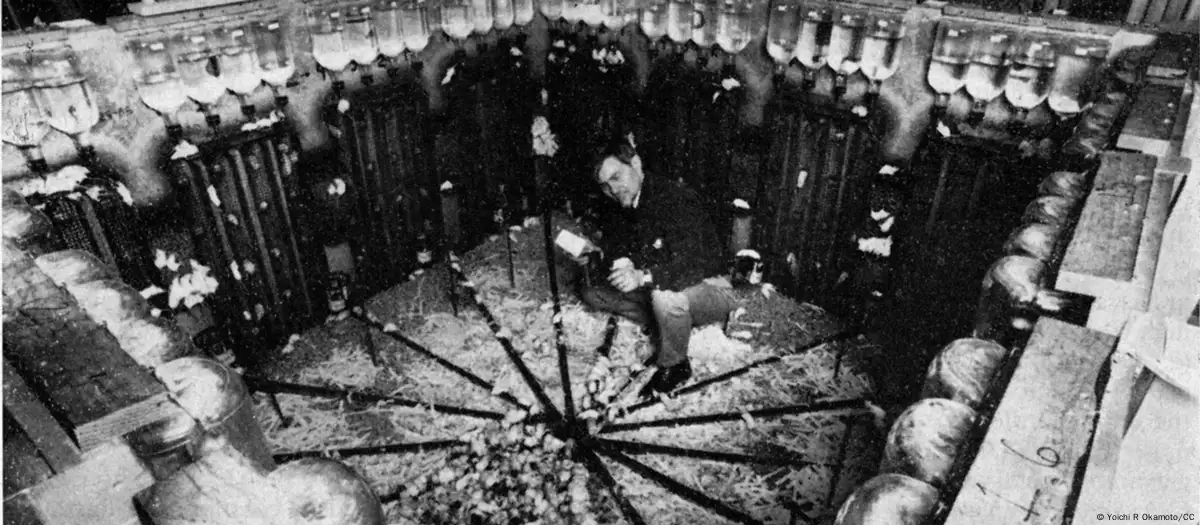During the 1950s and 1970s, amid growing global fears of overpopulation, an American scientist conducted a series of experiments that simulated a miniature apocalypse. These studies, which explored behavior under conditions of extreme overcrowding, offered disturbing conclusions that have resonated through the years.
These were the work of John B. Calhoun, a leading behavioral researcher and ethologist at the U.S. National Institute of Mental Health (NIMH) in Maryland, who aimed to explore a seemingly simple but profound question: what happens when a population has everything it needs?
The results, based on studies with mice and rats, revealed a dark spiral of social decay and demographic collapse that he called “behavioral drain” or “behavioral collapse,” offering a disturbing mirror of our society and a glimpse of what the future might hold for humanity.
Universe 25: The Famous Overcrowding Experiment
Calhoun’s most famous experiment, known as “Universe 25,” began on July 9, 1968. In a 9-by-9-foot enclosure, he created an ideal world for mice: unlimited food and water, hundreds of nests, perfect temperature, and a complete absence of predators. It was, in essence, every rodent’s “dream” come true.
The experiment, described in a 1973 paper titled Death Squared: The Explosive Growth and Demise of a Mouse Population, began with four carefully selected pairs of mice. At first, everything seemed to be going smoothly. The population grew rapidly, doubling every two months. The mice mated, bred, and thrived in their artificial paradise. However, when the population reached 620 individuals, problems began to arise that even the most pessimistic doomsday prophet could not have imagined.
As space became more scarce, mouse society began to break down in surprising ways. Young mice, unable to find their place in the social hierarchy, became misfits. Single females retreated to isolated nests on the upper levels, living as hermits. Meanwhile, “alpha males” exhibited extreme aggression, even reaching cannibalism, while other males, at the other extreme, became completely apathetic, spending their days eating, drinking, and grooming without interacting with others.
Perhaps most disturbing was the behavior of the mothers. Overwhelmed by the stress of overcrowding, many neglected their young or, worse, abandoned or attacked them. Infant mortality soared, reaching rates of up to 96 percent in some areas.
Despite having the space and resources to house up to 3,840 mice, the population never exceeded 2,200. The last birth occurred on day 600 of the experiment. From then on, mouse society entered what Calhoun called “behavioral drain”: the mice forgot how to mate, breed or even interact normally, suggesting a breakdown in social dynamics that could have alarming parallels with densely populated human cities.
Fears of Human Overpopulation
The growth and collapse of Universe 25, while dramatic, was only one part of a body of work that included multiple studies of rats and mice under controlled conditions. These investigations were influenced by the theories of Thomas Malthus expounded in his 18th-century work, An Essay on the Principle of Population, and found echoes in contemporary concerns about human overpopulation, as reflected by Paul Ehrlich in his 1968 book, The Population Bomb, which sparked widespread fears of a dystopian, overpopulated future, beginning with the fateful line: “The battle to feed all mankind is over.”
Ultimately, Calhoun was attempting not only to understand rodent population dynamics, but also to offer a warning about possible futures for humanity. He argued that overcrowding could lead to a “death of the spirit” even if all physical needs were met. Her ideas resonated strongly in an era concerned about uncontrolled urban growth and population explosion.
In that sense, Calhoun’s work left a deep mark on the popular and academic culture of her day. It inspired dystopian works, such as Robert C. O’Brien’s children’s science fiction novel Mrs. Frisby and the Rats of NIMH (1971), which imagined rats ingeniously escaping from conditions similar to those Calhoun had created. In addition, her research influenced urban design and left its mark on everyday language; terms such as “behavioral drainage” were adopted by writers such as Tom Wolfe to describe the problems of modern cities.
Validity for humans in doubt
However, over time, Calhoun’s interpretation has been questioned. Some researchers argue that the problem was not the population density itself, but the design of the experiment, which allowed the most aggressive mice to hog the best spaces, creating an artificial inequality.
Moreover, as critics remind us, humans are not mice. Subsequent studies have shown that people can adapt to overcrowding in ways that rodents cannot. Indeed, many cities today, as is the case in several cities in the United States, suffer from having too low a density, not too high, leading to problems of social isolation and lack of affordable housing.
Despite its limitations, Calhoun’s “mouse utopia” story remains a powerful metaphor for the complexity of societies. Beyond a simple warning about overcrowding, it challenges us to question our notions of progress and well-being. What makes a community thrive? How do we balance individual needs with collective ones? What does seem clear, once again, is a maxim that, although obvious, seems to elude us time and again: material abundance does not by itself guarantee a healthy society.
Edited by Felipe Espinosa Wang with information from Cosmos, The Guardian, Atlas Obscura, The Smithsonian Magazine and The New York Times.

![John B. Calhoun Film 7.1 [edited], (NIMH, 1970-1972)](https://i.ytimg.com/vi/iOFveSUmh9U/hqdefault.jpg)